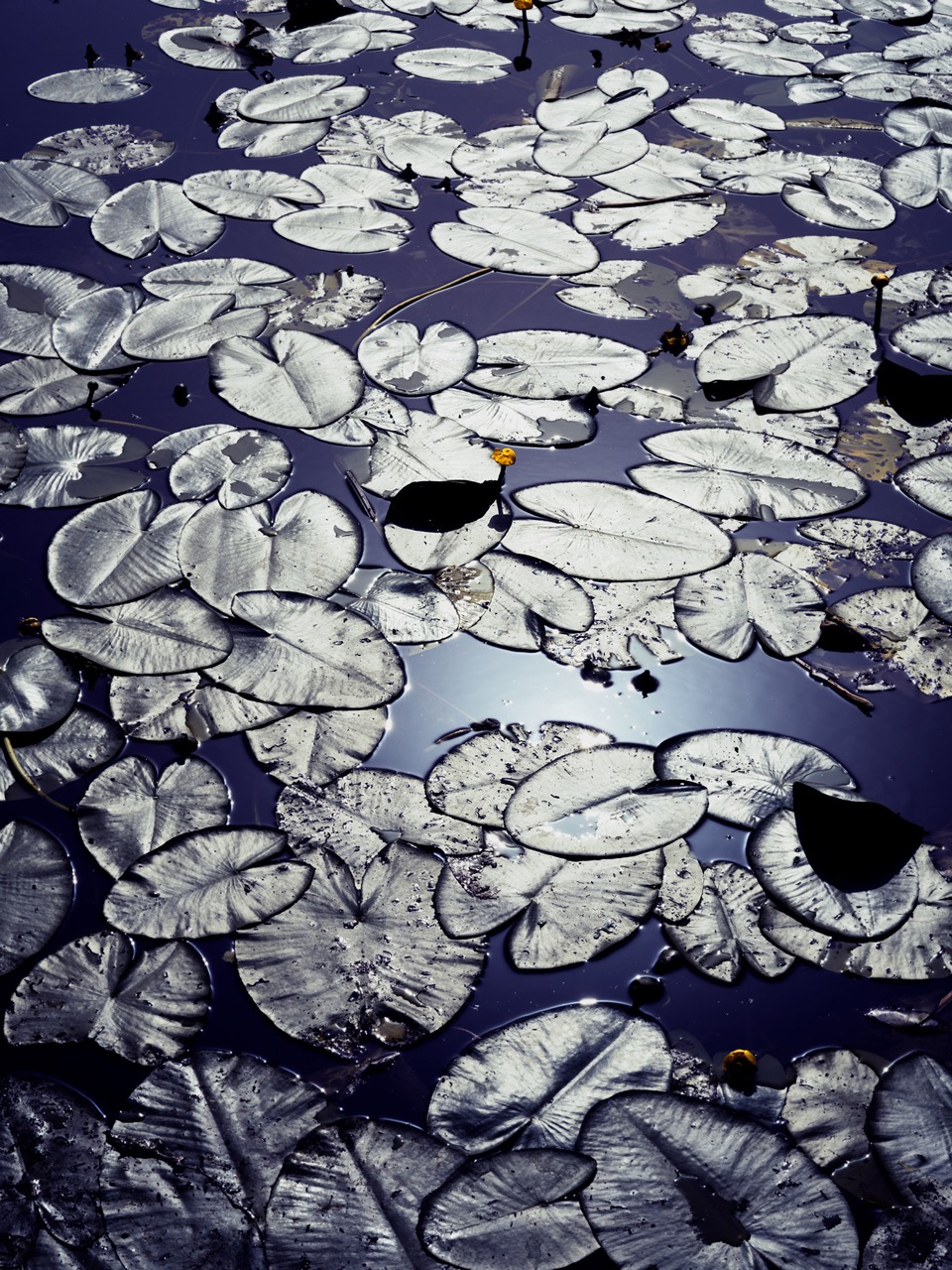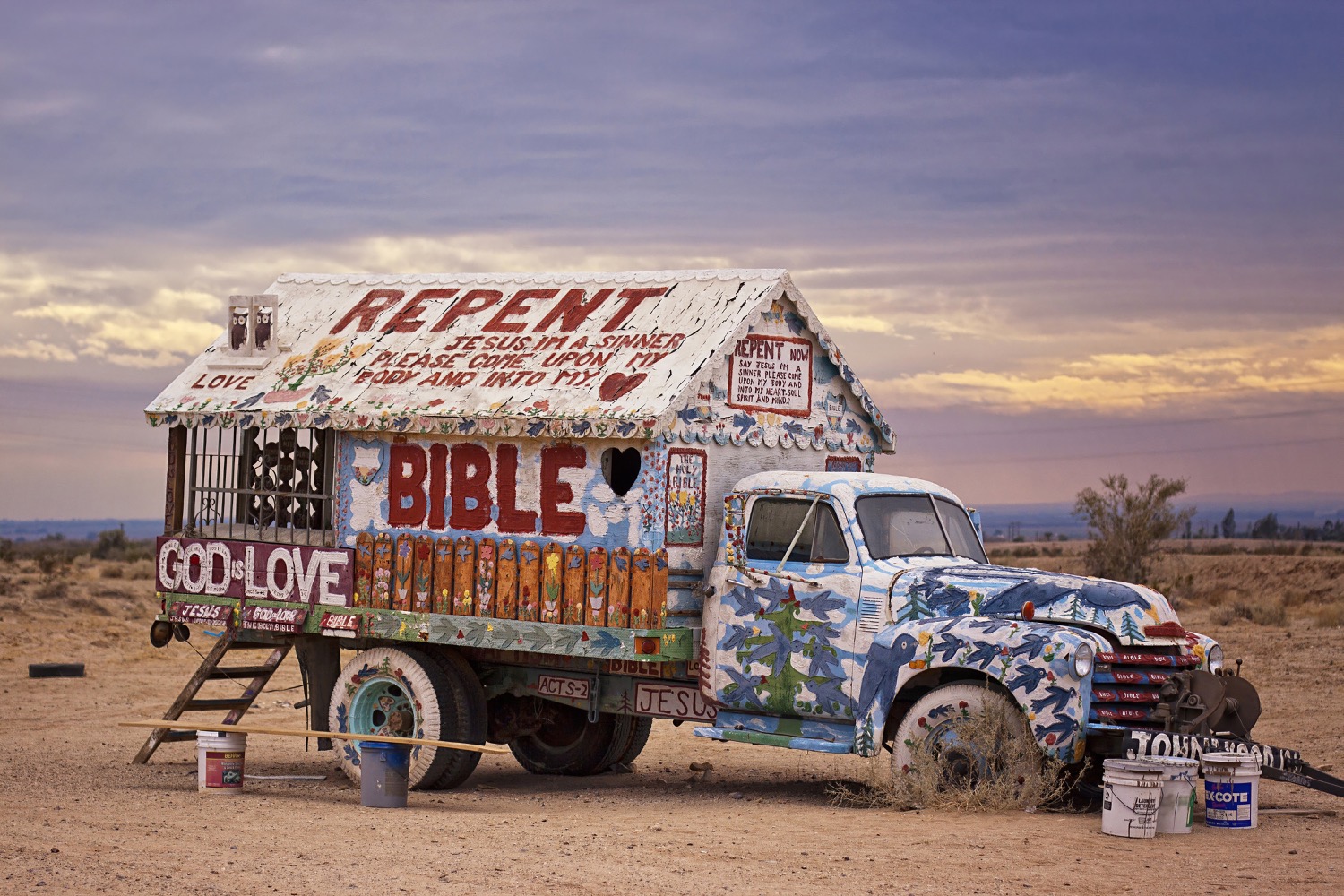
Alien elements as abstract symbols
Eckart Bartnik
The series Fremdkörper, translating to Foreign Matter, showcases strange objects found in barren landscapes, such as a rusted heater, a neglected football goal, and an aeroplane wreck.
Artdoc

The series Fremdkörper, translating to Foreign Matter, showcases strange objects found in barren landscapes, such as a rusted heater, a neglected football goal, and an aeroplane wreck. German photographer Eckart Bartnik amplifies the peculiarity of these found items with precise flashlights, creating an alien aspect to them. His photos raise the question: What are we observing, and what is the deeper meaning behind these human-made oddities? “Nature is not merely a backdrop. It is not something external to us. It is within us. Inseparable. And vulnerable,” Bartnik states.
Payment Failed
Eckart Bartnik explains that these human objects appear unexpectedly in the desolate landscape of Iceland. “They are reduced to a pure surface and express the contradictions of human existence.” For Bartnik, such items, like a tattered armchair, serve as a place of longing. “An abandoned shower becomes an oasis, and tulips in a concrete bucket become a ray of hope.” His pictures play with their illusionistic effect. “My photographs are not only depictions of reality but also abstractions that exaggerate the banal to the point of idealisation.”
The objects Bartnik photographed originate from the Icelandic landscape. “Objects of everyday life and technology appear unexpectedly in the barren surroundings, revealing the contradictions of human existence.” He staged them with theatre-like lighting to create sculptures of a fictitious world. “The landscape becomes a tableau for this staged amalgamation of appearance and reality. The small becomes monumental through staging, while the monumental loses its exaggeration. Out of nowhere, a bizarre sense of humour emerges, revealing an unexpected perspective on longing beyond the usual certainties and schemes.”

Reflection and abstraction
Eckart Bartnik utilises reflection to delve into the contradictions and complexities of being human. Through abstraction, he transforms nature into his visual world. “At the centre of my abstract work lies the question of the invisible resonances between nature and the viewer. Visible forms and structures lose their concrete meaning and shift into intuitive landscapes. I intentionally cross the boundaries of the visible, opening spaces where the familiar slips into the unknown and where reality dissolves into abstraction. In this way, I continue to explore nature – no longer through experimentally verifiable methods but with an artistic approach.” Both creative paths open a space where the visible and invisible merge. The dynamic tension between abstraction and reflection drives Bartnik to create images as a manifesto that declares ‘look deeper’. “The world is far more complex and wondrous than it appears.”

Vague intuition
In a time when seemingly everything has already been photographed, Bartnik finds it challenging to develop a personal and relevant project. “Most of my ideas begin with a vague intuition—sparked by observations in a landscape, an unexpected visual experience, or even everyday events. From there, a more concrete concept gradually takes shape.”
Before his first trip to Iceland in 2011, he learned that many Icelanders do not dismiss a belief in elves and trolls. “However, it was only on location, in the shifting interplay of light, storm, and mist, that the concept of Elfenfelsen (Elven Rocks) came to me. Strangely shaped and often isolated in the landscape, these rocks seemed to possess their own presence. The awe I felt in the face of this raw nature led me to regard the belief in elves as a form of reverence – a recognition that humans do not stand above nature.”

Remote-controlled flash
For the photographic realisation, he returned to the technique of remote-controlled flash, by which he transformed the rocks through light and perspective into mystical apparitions. “The experience with the rocks sharpened my gaze. During the same trip, I began deliberately staging real objects. This gave rise to the series Fremdkörper.” Other projects emerged differently – but what unites them is that they all begin with a motif, an inner urgency, or an unanswered question.

The Invisible
As a biology student, Eckart Bartnik began exploring the microcosm with a self-built microscope —a fascination that led him into biomedical research. “As a visually oriented person, I initially sought understanding through seeing before applying molecular or biochemical methods. I hoped to make hidden phenomena visible, especially through light and electron microscopy.”
To see something without understanding it impressed him deeply. “At the same time, I witnessed how deeply biomedical science depends on data visualisation to extract meaning from an ever-growing flood of information.” This tension between visibility and incomprehension, between data overload and insight, sharpened his gaze on the hidden reality. “I opened myself for a reality infused with mystery, resistant to purely rational inquiry.” This experience shaped his artistic work. “Seeing, for me, is no longer just grasping—but a tentative approach. What once had been scientific observation became a quiet attempt to make the invisible felt through photography – in images that resonate beneath the surface.”

Images as dialogue
Bartnik hopes his images inspire reflection, invite openness, and awaken subjective associations. “When people begin to see music, hear in colour, and lose themselves in the images—then the images transform into a dialogue, creating an inner space for viewers. A quote attributed to Edgar Degas perfectly captures this: Art is not what you see, but what you make others see.”
What moves him most is when his sense of wonder becomes contagious – the quiet pause in front of the unfathomable, which cannot be explained. “Wonder, to me, is the origin of art and insight. It is both curious and reverent, perhaps even humble. At its core, I feel something spiritual: a quiet burst of beauty, a shimmer of mystery.”

Painting with light
As a scientist, Bartnik searched for the mechanisms behind phenomena, striving to recognise, analyse, and decode patterns. As a photographer, he experienced the freedom to see and marvel without the need to explain. “I follow the visual, shape it into an image that detaches from visible reality and moves into abstraction. For many years, I worked with analogue large-format cameras – fascinated by the physical, decelerated process that held something meditative. Today, I embrace the possibilities of digital photography. It allows me to shape more precisely and model colours, contrasts, and moods with greater subtlety. Like a painter with light, I develop the image until it unfolds its own reality – beyond the visible.
Light has become one of his most powerful tools. With carefully placed flashes, he does more than illuminate a scene or an object; he carves out the essentials, reveals hidden structures, and guides perception. “In this way, I move beyond the purely documentary and allow my feelings and interpretations to flow into the final image. It is not just about capturing what is present, but revealing what lies beneath the surface, waiting to be seen.”
Nature is not merely a backdrop. It is not something external to us. It is within us. Inseparable. And vulnerable.

Nature is within us
The consequences of human actions, the dramatic loss of species, climate change, and eroding trust in scientific knowledge have profoundly influenced his work. “Through my photographs, I aim to raise awareness – through wonder, beauty, and the experience of connectedness. Nature is not merely a backdrop. It is not something external to us. It is within us. Inseparable. And vulnerable. What we do to nature, we do to ourselves.” <
About
Eckart Bartnik (*1957) is a former cell and molecular biologist who has always pursued artistic projects alongside his scientific research. His work merges analytical precision with the emotional power of art, transforming nature’s hidden structures into abstract, expressionist imagery. Since retiring from science in 2023, he has fully dedicated himself to photography. His work has been published in Spiegel Online, The Guardian, and FAZ and exhibited internationally.
.svg)
.svg)
.svg)










